Urban-Air Port designs "world's first urban airport" for flying cars and drones
Aviation and aerospace manufacturing company Urban-Air Port has designed Air One, an airport for electric flying cars and large drones in Coventry, UK.
The 17,000-square-foot airport is designed to be "a world-first fully-operational 'pop up' urban airport and charging hub for future electric vertical take-off and landing (EVTOL) aircraft", Urban-Air Port said.
Air One, which was constructed from steel and aluminium wrapped in a tensile translucent fabric, is located in the centre of Coventry in the West Midlands and set to open this month.
Urban-Air Port said flying cars that transport passengers could start using the airport in 2025, while the first cargo drone is set to take off on 25 April 2022.
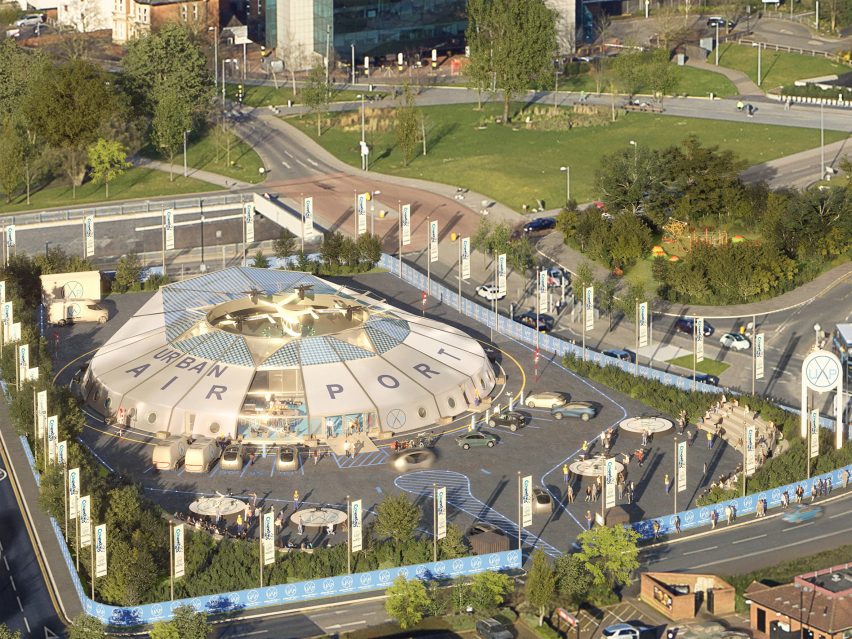
"We wanted to create a multi-functional operations hub for manned and unmanned vehicles providing aircraft command and control, refuelling, cargo and passenger loading," founder and executive chairman of Urban-Air Port Ricky Sandhu said.
"This new, green intermodal infrastructure will remove the largest, single constraint to sustainable air mobility and significantly cut congestion and air pollution from passenger and cargo transport and create a zero-emission ecosystem," he told Dezeen.
The airport will be powered by hydrogen fuel cells.
"In Coventry, we are powering AirOne from hydrogen fuel cells that will also power our fast EV chargers," Sandhu said. "The EV chargers are for ground transport vehicles so we provide a seamless journey that is zero-emission."
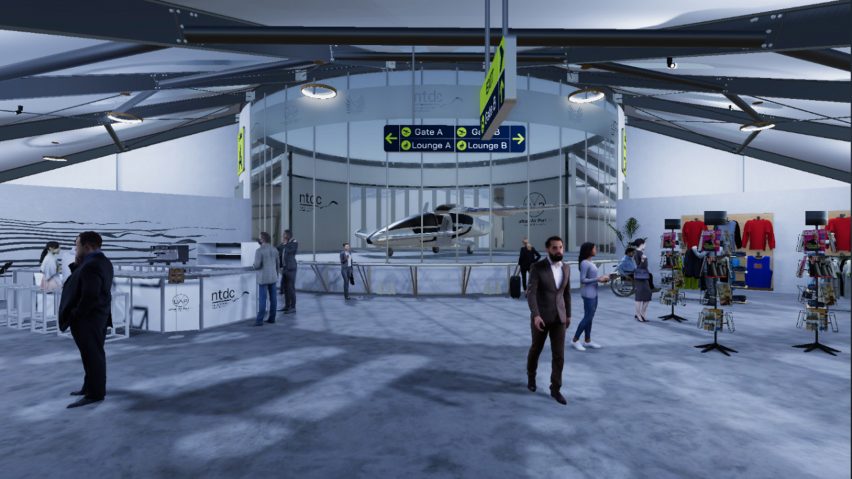
While the EVTOL cars will transport passengers around the country, the autonomous drones will collect and deliver emergency supplies and equipment for the British police and emergency services.
The vehicles will take off from a 14-metre-wide launchpad that sits atop the middle of the prefabricated building, giving it its domed shape.
When a flying car or drone touches down on the landing platform, the vehicle drops down inside the hanger, where it can recharge and unload to be ready for its next flight.
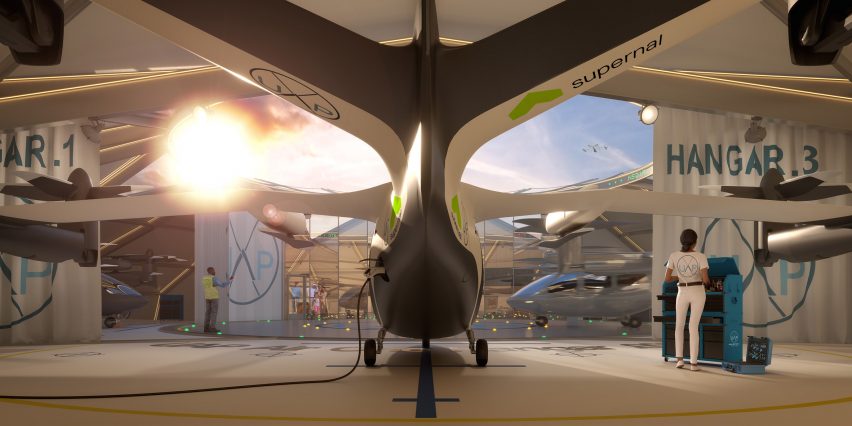
A model flying car called Air Taxi SA-1 by South Korean carmaker Hyundai Motor Group's Urban Air Mobility Division Supernal is currently on display in the hangar.
One of many car manufacturers in the race to commercialise flying taxi services, Supernal is planning on commercialising the aerial vehicle by 2028.
Elsewhere inside the building, there will be a passenger lounge, security screening area, restaurants, shops and a designated drone area.
A separate defence and logistics area will house disaster relief operations, airside-mobile-clinics, air evacuation hubs, defence and logistics lines and other emergency services.
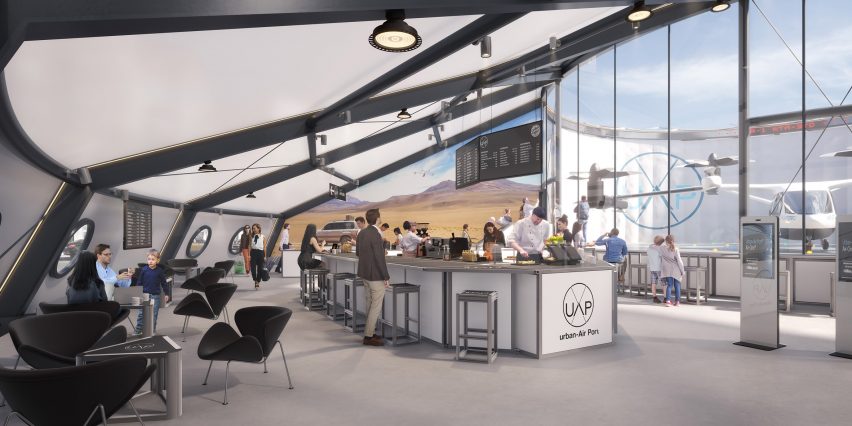
The airport, which is also known as a skyport or vertiport, has a 60 per cent smaller footprint than traditional heliports. According to Sandhu, the decision to create a smaller airport was based on its central city location.
"In Coventry, we are in an ultra-dense location where almost half a million people work and live right next to the main train station in the city centre," explained Sandhu.
"Our solution is compact but high capacity – that means we take up less space in the heart of a city where these electric vehicles can land and take off efficiently and quickly providing a new mode of sustainable transport and new connectivity."
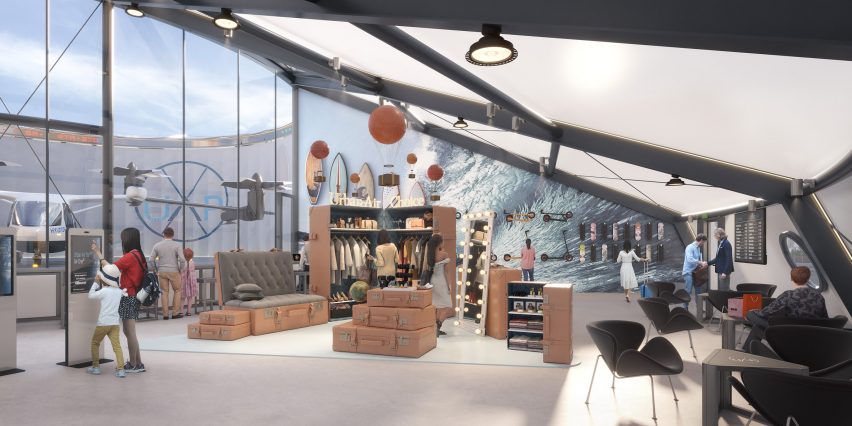
The company used lightweight materials that could be easily replicated and mounted for the design of the skyport, as it plans to open 200 more ports in cities around the world in the next five years.
The design also means that the building can be replicated and adapted in the future to be suitable for other modes of transport, such as flying buses or scooters.
"The choice of building materials for the Air One are in line with Urban-Air Port's DNA and are based on rapid deployability, flat-packed system, modularity and demountability," said Sandhu.
"This allows for a quick installation and dismantling processes and transportation to the next venue."
Sandhu claims that the launch of Air One marks an important step in the burgeoning flying vehicle industry and could reduce congestion and air pollution in cities, providing a solution to the growing climate crisis.
"Air taxis will certainly help remove some congestion and pollution of our streets but they are intended to be a complementary mode of transposition," he said.
"As urban populations grow year on year it's these new sustainable mobility solutions that we will need to help lighten the load and at the same time get us moving and the economy moving quicker," he added.
Other companies in the electric flying vehicles market include Chinese electric vehicle manufacturer XPeng, which recently revealed a concept flying car. Slovakian company Klein Vision has also developed AirCar, a vehicle that can travel both on roads and in the air.
The race to develop flying cars has subsequently prompted companies to plan ahead for skyports, with Uber calling on architecture studios to create concept designs of skyports for both ground-based and drone taxi fleets.
Images and video courtesy of Urban-Air Port.
Dezeen is on WeChat!
Click here to read the Chinese version of this article on Dezeen's official WeChat account, where we publish daily architecture and design news and projects in Simplified Chinese.